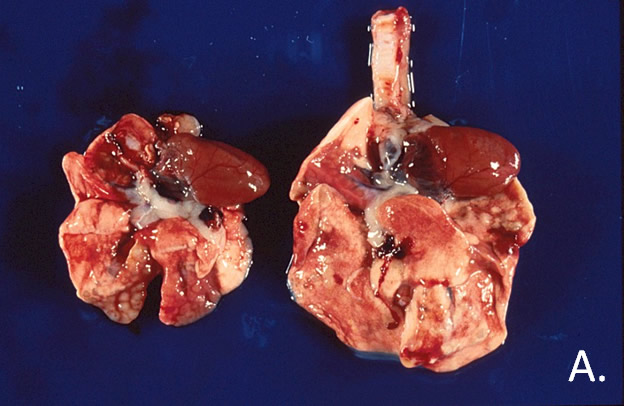Etiology: Filobacterium rodentium is a filamentous bacterium found parallel to and among the cilia of the respiratory tract. The bacterium is frequently found in rats concurrently colonized with Mycoplasma pulmonis; however, Filobacterium rodentiumis capable of causing respiratory disease as a mono-infection.
Incidence: The incidence of infection is uncommon.
Transmission: Direct contact is the mode of transmission.
Clinical Signs: Subclinical infections are possible. Infection begins without clinical signs. Adverse environmental factors, such as high cage ammonia levels, and/or the acquisition of primary viral or bacterial respiratory pathogens activate subclinical infections. Early signs of overt disease include oculonasal discharge and torticollis. As the organisms travel down the respiratory tract, labored breathing, anorexia, and hunched posture occur. Other clinical signs include snuffling, chattering, anorexia with weight loss, rough hair coat, hunched posture, and reduced fertility.
Pathology: In the upper respiratory tract, a purulent discharge may be found on the nasal mucosa and within the tympanic bullae. This purulent exudate can be found in the trachea and bronchi causing yellow parenchymous foci which may progress to form bullae (bronchiectasis) and red to grey areas of consolidation (A.). Histologic examination of lungs reveals a purulent bronchopneumonia with moderate hyperplasia of the peribronchial lymphoid aggregates. Examination of silver-stained respiratory sections will help identify the presence of Filobacterium rodentium, which will stain with silver and are present among the cilia of the airways (arrowhead, B.)


Diagnosis: PCR can be used to identify the organism from nasal swabs collected from infected animals. MFI and IFA are serologic tests which can detect infection.